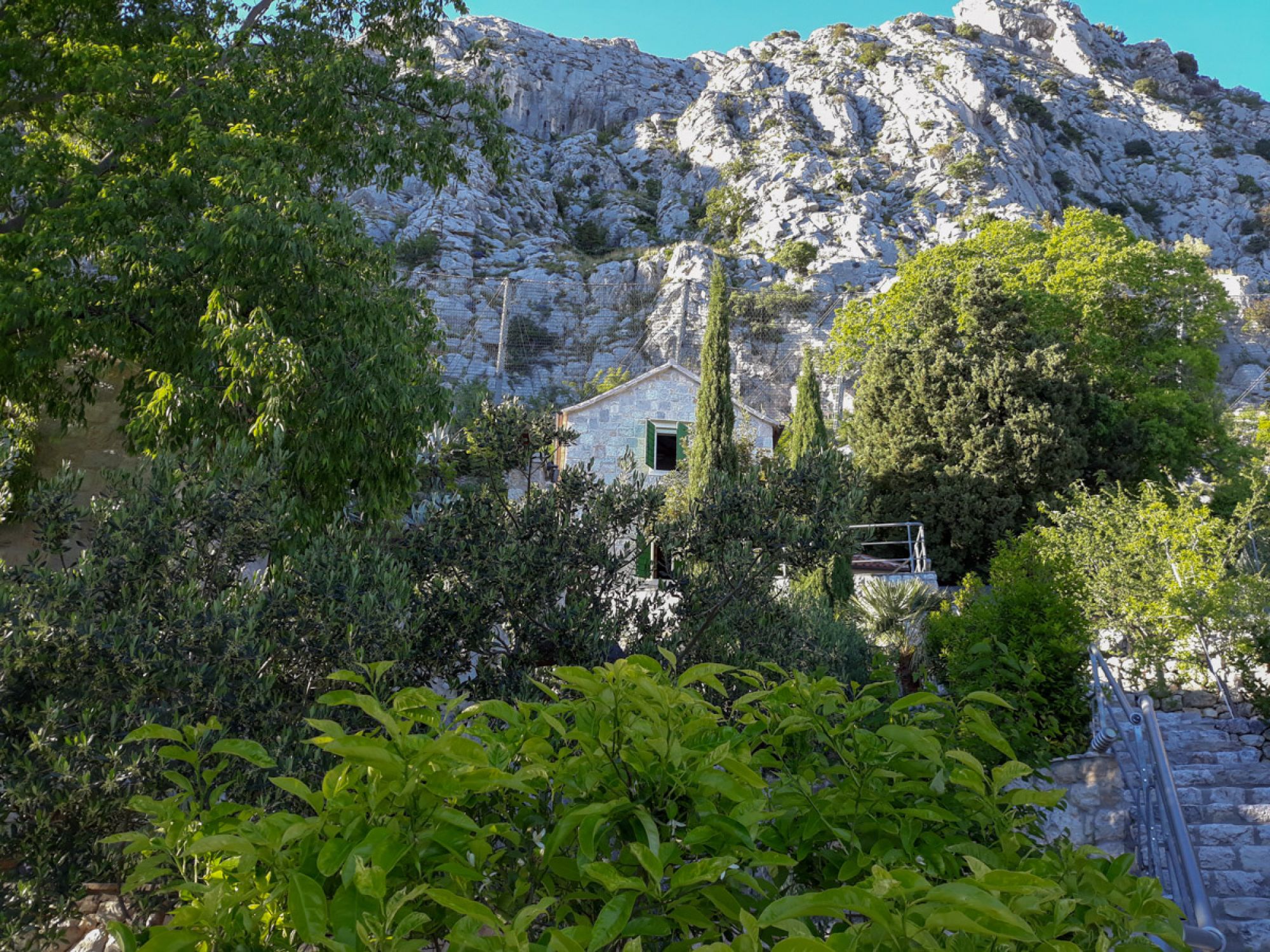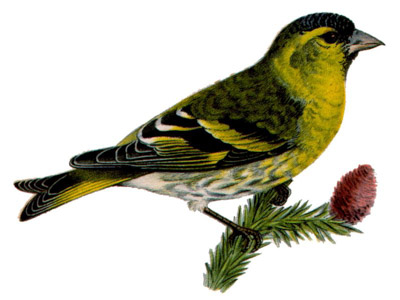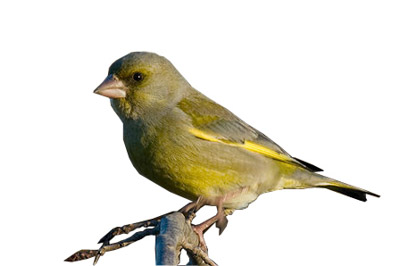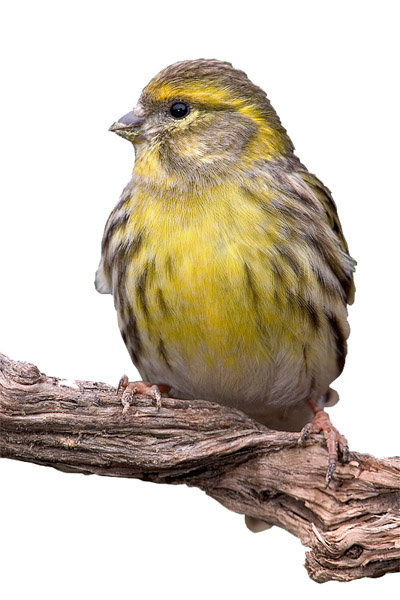
- By Super User
About names of properties and villas
Nidus Onei translated from the Latin language means High Nest. We chose this name trying to include roots of this location dated from Old Roman times (settlement Oneo, today's Omiš), unique hidden position (like a nest) and birds that we used to hear around this location while the houses were still abandoned ruins. So the villas have given the name Frzelin (Serin), Lugarin (Siskin) and Verdun (Greenfinch). Below are some facts about these beautiful birds.

Key information
The siskin is a small, lively finch, which is smaller than a greenfinch. It has a distinctly forked tail and a long narrow bill. The male has a streaky yellow-green body and a black crown and bib. There are yellow patches in the wings and tail.
What they eat:
Seeds, especially of conifers, alders and birch and some insects.
Measurements:
Length: 12cm
Wingspan: 20-23cm
Weight: 12-18g
The Eurasian siskin (Spinus spinus) is a small passerine bird in the finch family Fringillidae. It is also called the European siskin, common siskin or just siskin. Other (archaic) names include black-headed goldfinch, barley bird and aberdevine. It is very common throughout Europe and Asia. It is found in forested areas, both coniferous and mixed woodland where it feeds on seeds of all kinds, especially of alder and conifers.
It can be distinguished from other similar finches by the color of the plumage. The upperparts are greyish green and the underparts grey-streaked white. Its wings are black with a conspicuous yellow wing bar, and the tail is black with yellow sides. The male has a mainly yellow face and breast, with a neat black cap. Female and young birds have a greyish green head and no cap. It is a trusting, sociable and active bird. The song of this bird is a pleasant mix of twitters and trills. For these reasons, it is often raised in captivity.
These birds have an unusual migration pattern as every few years in winter they migrate southwards in large numbers. The reasons for this behavior are not known but may be related to climatic factors and above all the availability of food. In this way, overwintering populations can thrive where food is abundant. This small finch is an acrobatic feeder, often hanging upside-down like a tit. It will visit garden bird feeding stations.
More about siskin on Wikipedia
Here you can watch a short siskin video.
Here you can hear siskin song.
_________________________________________________________

Key information
Its twittering, wheezing song and flash of yellow and green as it flies, make this finch a truly colorful character. Nesting in a garden conifer, or feasting on black sunflower seeds, the greenfinch is a regular garden visitor, able to take advantage of food in rural and urban gardens. Although quite sociable, they may squabble among themselves or with other birds at the bird table.
What they eat:
Seeds and insects.
Measurements:
Length: 15cm
Wingspan: 26cm
Weight: 28g
The greenfinches are small passerine birds in the genus Chloris in the subfamily Carduelinae within the Fringillidae. The species have a Eurasian distribution except for the European greenfinch, which also occurs in North Africa.
These finches all have large conical bills and yellow patches on the wing feathers.
The greenfinches were formerly placed in the genus Carduelis. Molecular phylogenetic studies showed that the greenfinches form a monophyletic group that is not closely related to the species in Carduelis and instead is sister to a clade containing the desert finch (Rhodospiza obsoleta) and the Socotra golden-winged grosbeak (Rhynchostruthus socotranus). The greenfinches were therefore moved to the resurrected genus Chloris which had originally been introduced by the French naturalist Georges Cuvier in 1800 with the European greenfinch as the type species. The name is from Ancient Greek khloris, the European greenfinch, from khloros, "green".
More about greenfinch on Wikipedia.
Here you can hear a greenfinch song.
Here you can watch a short video of a greenfinch.
_____________________________________________________

Key information
Serins are small finches with short stubby bills and forked tails. Both sexes have streaky yellow-brown upperparts, paler streaked underparts and lemon yellow rumps. Males have bright yellow heads with darker patches on the crown and below the eye, females and juveniles are much duller.
What they eat:
Seeds, buds and small invertebrates.
Measurements:
Length: 11-12cm
Wingspan: 18-20cm
Weight: 12-15g
The European serin, or just serin (Serinus serinus), is the smallest European species of the family of finches (Fringillidae) and is closely related to the canary. Its diet consists mainly of a combination of buds and seeds.
The European serin is a small short-tailed bird, 11–12 cm in length. The upperparts are dark-streaked greyish green, with a yellow rump. The yellow breast and white belly are also heavily streaked. The male has a brighter yellow face and breast, yellow wing bars and yellowtail sides. The song of this bird is a buzzing trill, very familiar in Mediterranean countries.
It breeds across southern and central Europe and North Africa. Southern and Atlantic coast populations are largely resident, but the northern breeders migrate further south in Europe for the winter. Open woodland and cultivation, often with some conifers, is favored for breeding. It builds its nest in a shrub or tree, laying 3–5 eggs. It forms flocks outside the breeding season, sometimes mixed with other finches.
The food is mainly seeds, and, in the breeding season, insects. This small serin is an active and often conspicuous bird.
More about serin on Wikipedia.
Here you can hear a serin song.
Here you can watch a short serin video.
